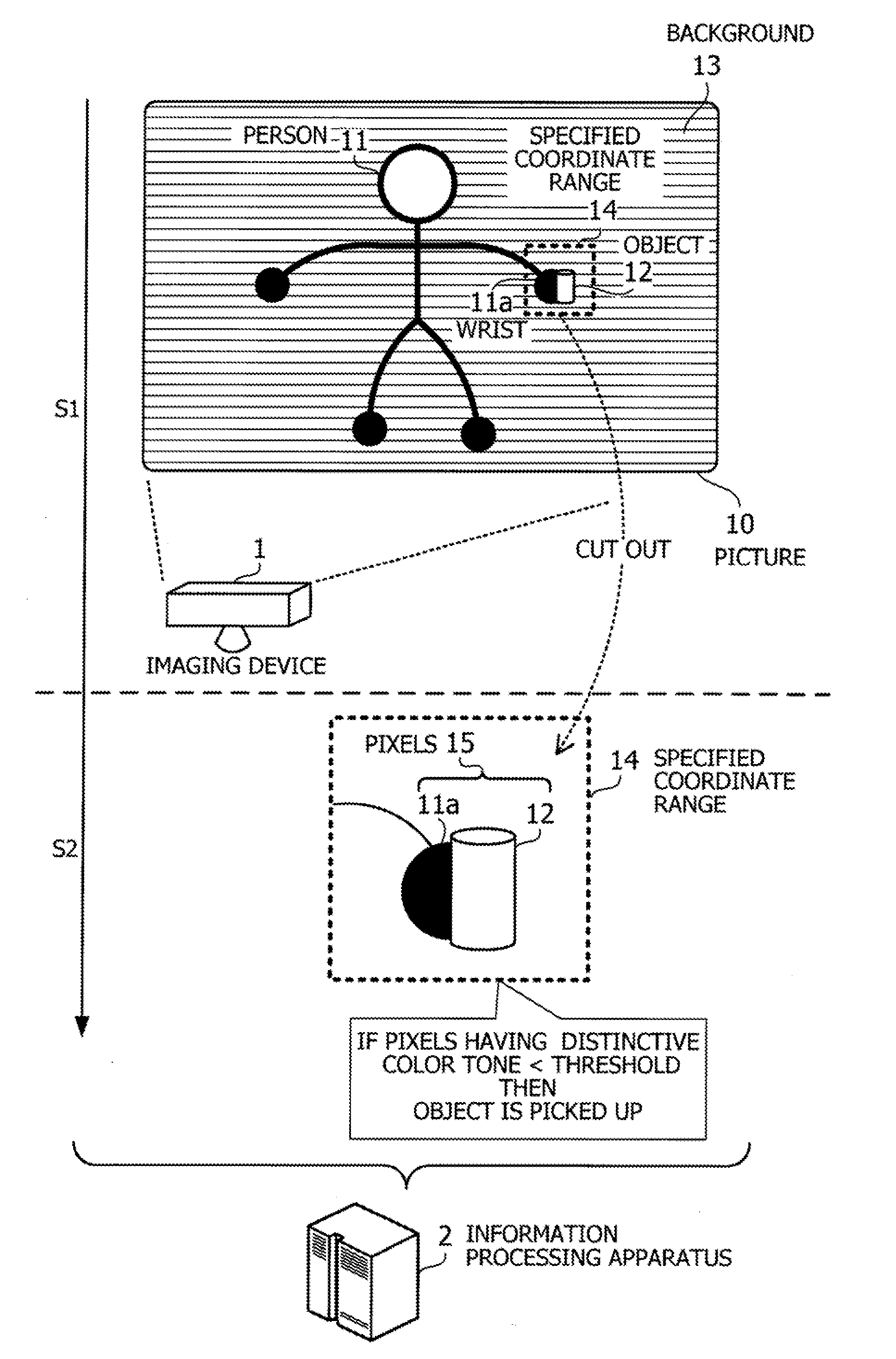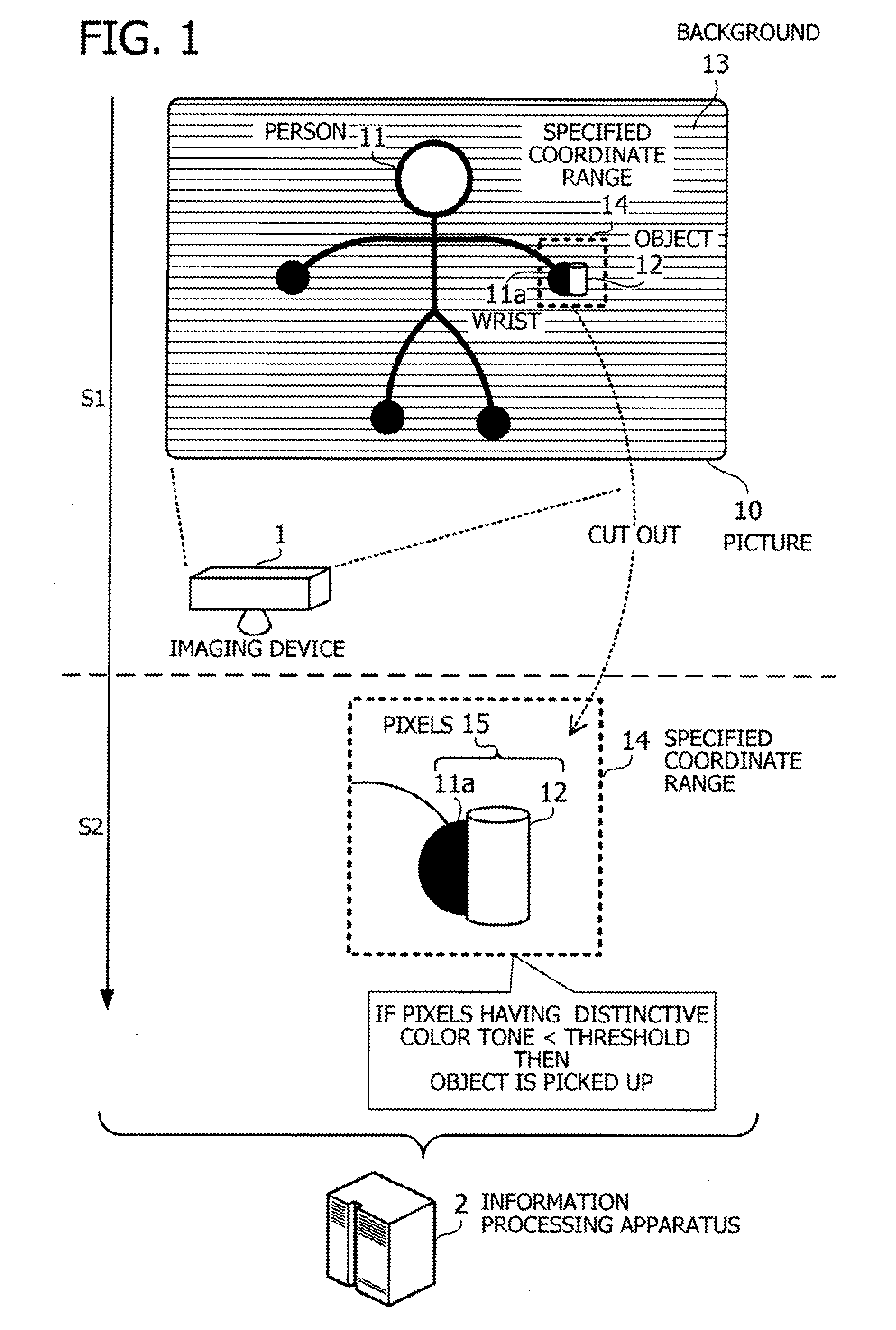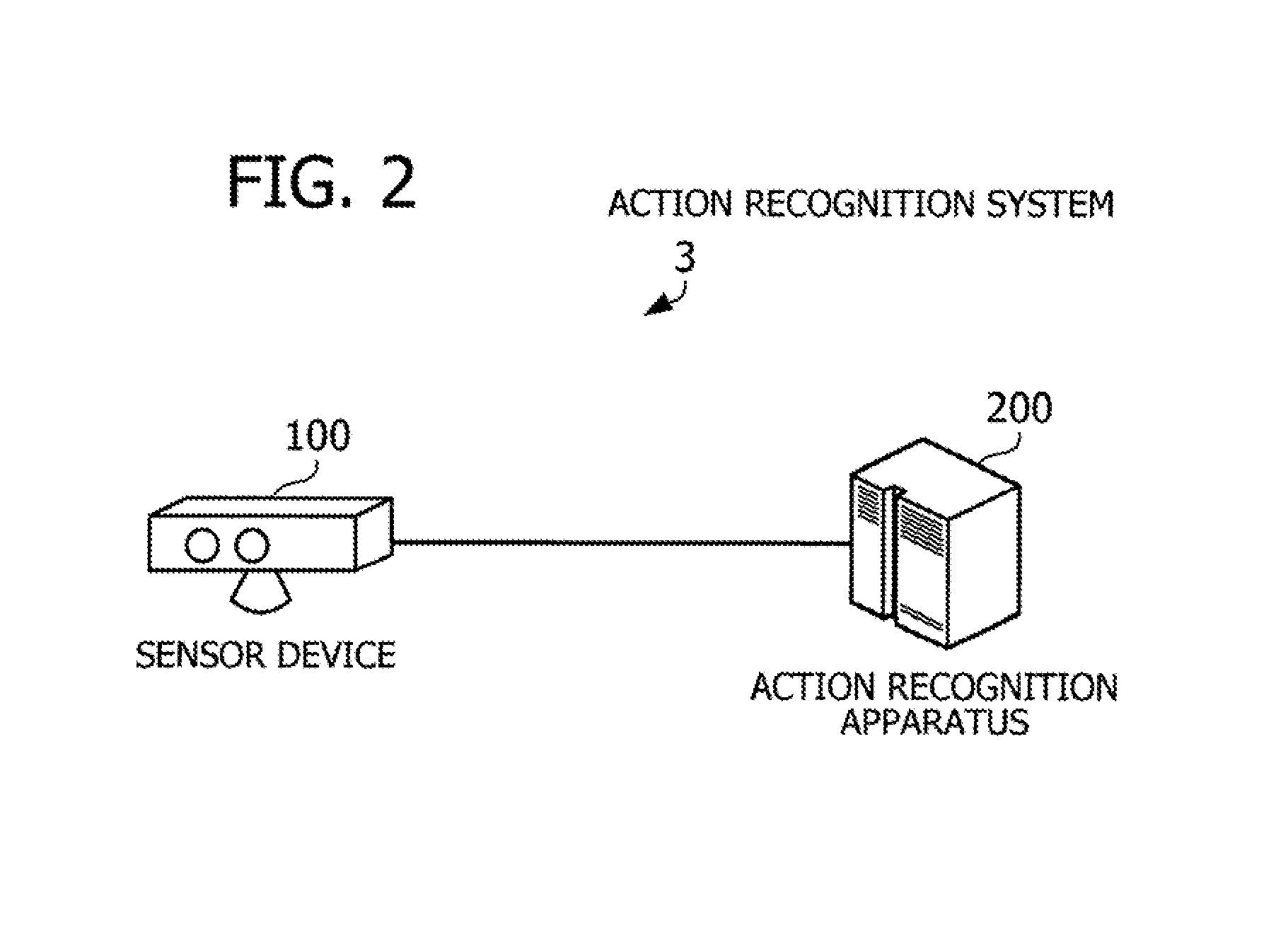Method and apparatus for recognizing actions
a technology of actions and methods, applied in the field of methods and apparatus for recognizing actions, can solve the problems that the above-described conventional techniques may, however, exhibit some inaccuracy in particular cases
- Summary
- Abstract
- Description
- Claims
- Application Information
AI Technical Summary
Benefits of technology
Problems solved by technology
Method used
Image
Examples
first embodiment
(a) First Embodiment
[0029]FIG. 1 illustrates an exemplary process executed by an information processing apparatus according to a first embodiment. Seen in the middle part of FIG. 1 is an imaging device 1 that takes still or video pictures in a specific view field to which it is directed. Pictures captured by the imaging device 1 are sent to an information processing apparatus 2 so as to determine whether a person seen in the pictures has picked up a particular object. This information processing apparatus 2 may be, for example, a computer or other processing devices.
[0030]Specifically, the information processing apparatus 2 receives data of a picture captured by the imaging device 1, which contains an image of a person and one or both of his or her wrists. The information processing apparatus 2 obtains the distance of each such subject from the imaging device 1. This distance information is provided for each individual pixel constituting the picture. The information processing appar...
second embodiment
(b) Second Embodiment
[0044]FIG. 2 illustrates an example of an action recognition system according to a second embodiment. The illustrated action recognition system 3 includes a sensor device 100 and an action recognition apparatus 200, both located in a retail shop of particular products. It is also possible to place the sensor device 100 alone in the shop, with a connection to the action recognition apparatus 200 located in other premises. The sensor device 100 may have various functions, part of which works as an implementation of the imaging device 1 discussed in the first embodiment. The action recognition apparatus 200 is an implementation of the foregoing information processing apparatus 2 of the first embodiment.
[0045]The sensor device 100 has the function of capturing pictures of at least an area in the shop space where products are displayed for sale. For example, the sensor device 100 may be directed at a particular product showcase (not illustrated). The sensor device 10...
third embodiment
(c) Third Embodiment
[0142]This section describes an action recognition system according to a third embodiment. The proposed action recognition system of the third embodiment may be regarded as a modified version of the action recognition system 3 discussed above in the second embodiment. Specifically, the third embodiment is configured to determine the thresholds demarcating a range(s) of distinctive color tone, on the basis of color codes of pixels contained in a hand area. The pixels in the hand area are then classified according to the determined thresholds.
[0143]The above features of the third embodiment are expected to work effectively when, for example, the customer wears a pair of globes with a color other than skin colors. If the thresholds are fixed for a particular skin color, then the distinctive color pixel count would be zero in this case, in spite of the fact that the customer's hand is there. The incorrect pixel count would result in a failed determination of whether ...
PUM
 Login to View More
Login to View More Abstract
Description
Claims
Application Information
 Login to View More
Login to View More - R&D
- Intellectual Property
- Life Sciences
- Materials
- Tech Scout
- Unparalleled Data Quality
- Higher Quality Content
- 60% Fewer Hallucinations
Browse by: Latest US Patents, China's latest patents, Technical Efficacy Thesaurus, Application Domain, Technology Topic, Popular Technical Reports.
© 2025 PatSnap. All rights reserved.Legal|Privacy policy|Modern Slavery Act Transparency Statement|Sitemap|About US| Contact US: help@patsnap.com



